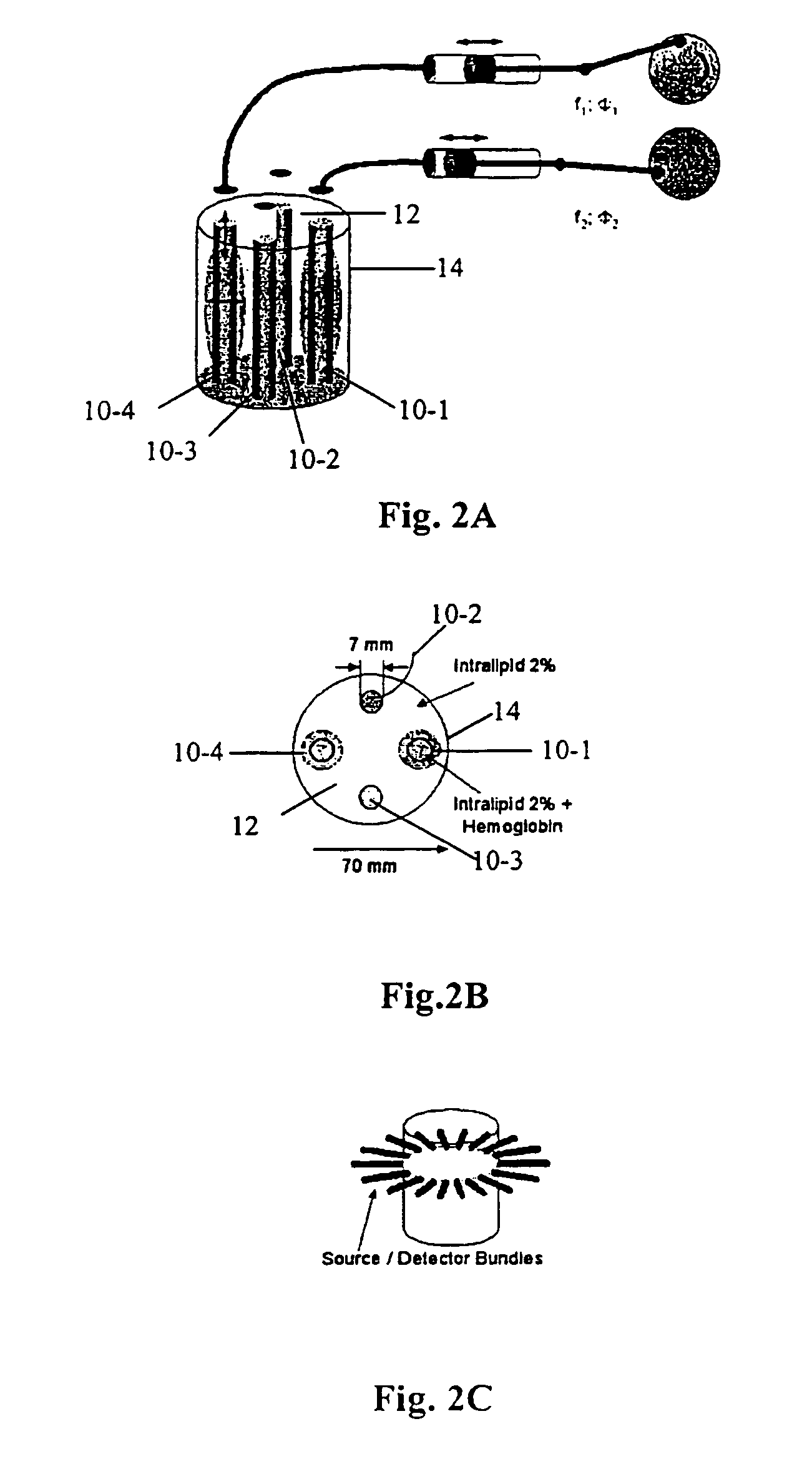Method and system for imaging the dynamics of scattering medium
a scattering medium and dynamics technology, applied in the field of scattering medium imaging, can solve the problems of high computing power to cost ratio, excessive branching of vessels, and highly disorganized tissues, and achieve the effects of reducing the need for undue system calibration, enhancing resolution and contrast, and enhancing stability
- Summary
- Abstract
- Description
- Claims
- Application Information
AI Technical Summary
Benefits of technology
Problems solved by technology
Method used
Image
Examples
Embodiment Construction
Introduction
[0059]The present invention is built upon known basic approaches to tomographic imaging of a scattering medium, by enabling the investigation of the spatio temporal dynamics of a target medium. This enhancement represents a fundamentally new imaging modality with broad based applications such as in industrial processes involving preparation of powdered mixtures, imaging subsurface turbulence in murky waters and throughout clinical medicine both as a highly sensitive diagnostic imaging tool, as well as for use in treatment planning, therapeutic monitoring and follow-up.
[0060]For example, the present invention recognizes that the occurrence of dynamic behavior in human tissue lends the collected data and reconstructed images to evaluation using time series analysis methods, including pattern recognition schemes. Dynamic behavior is known to occur in vascular structures in response to cardiac, respiratory, vasomotor and local metabolic influences. Because optical tomography...
PUM
| Property | Measurement | Unit |
|---|---|---|
| diameter | aaaaa | aaaaa |
| modulation frequency | aaaaa | aaaaa |
| modulation frequencies | aaaaa | aaaaa |
Abstract
Description
Claims
Application Information
 Login to View More
Login to View More - R&D
- Intellectual Property
- Life Sciences
- Materials
- Tech Scout
- Unparalleled Data Quality
- Higher Quality Content
- 60% Fewer Hallucinations
Browse by: Latest US Patents, China's latest patents, Technical Efficacy Thesaurus, Application Domain, Technology Topic, Popular Technical Reports.
© 2025 PatSnap. All rights reserved.Legal|Privacy policy|Modern Slavery Act Transparency Statement|Sitemap|About US| Contact US: help@patsnap.com



